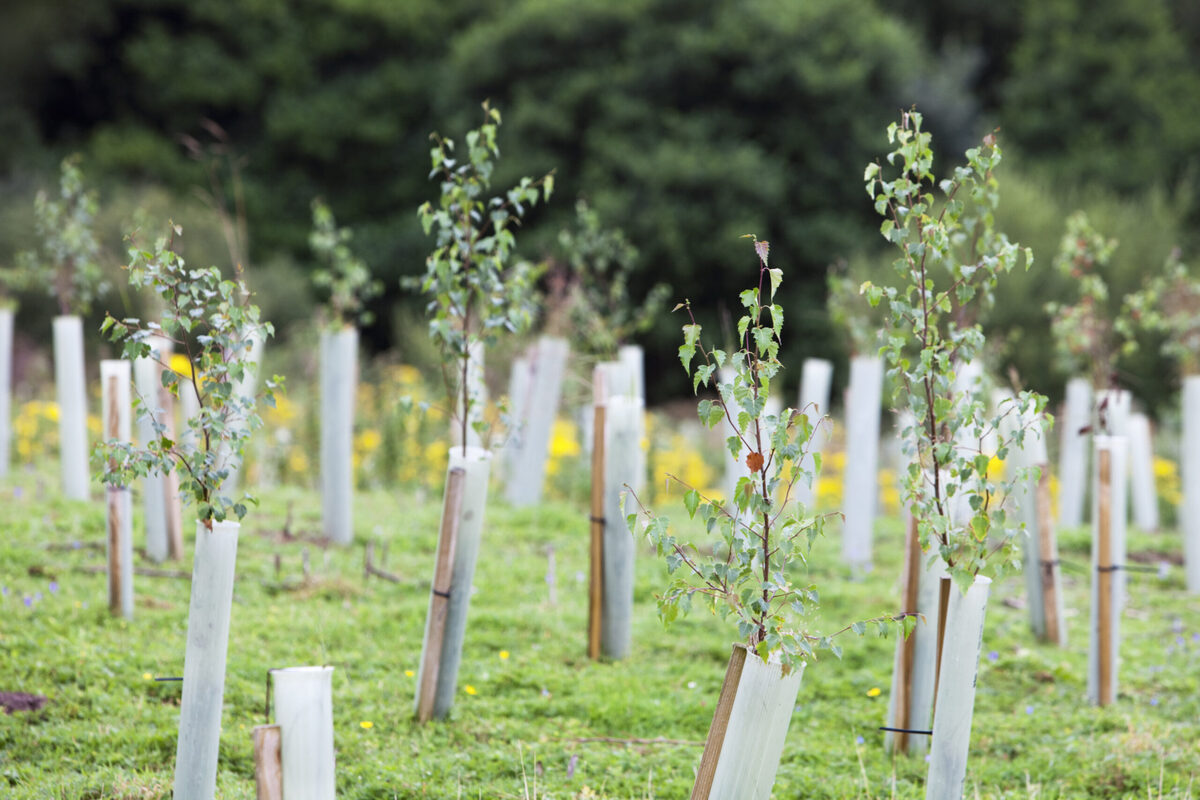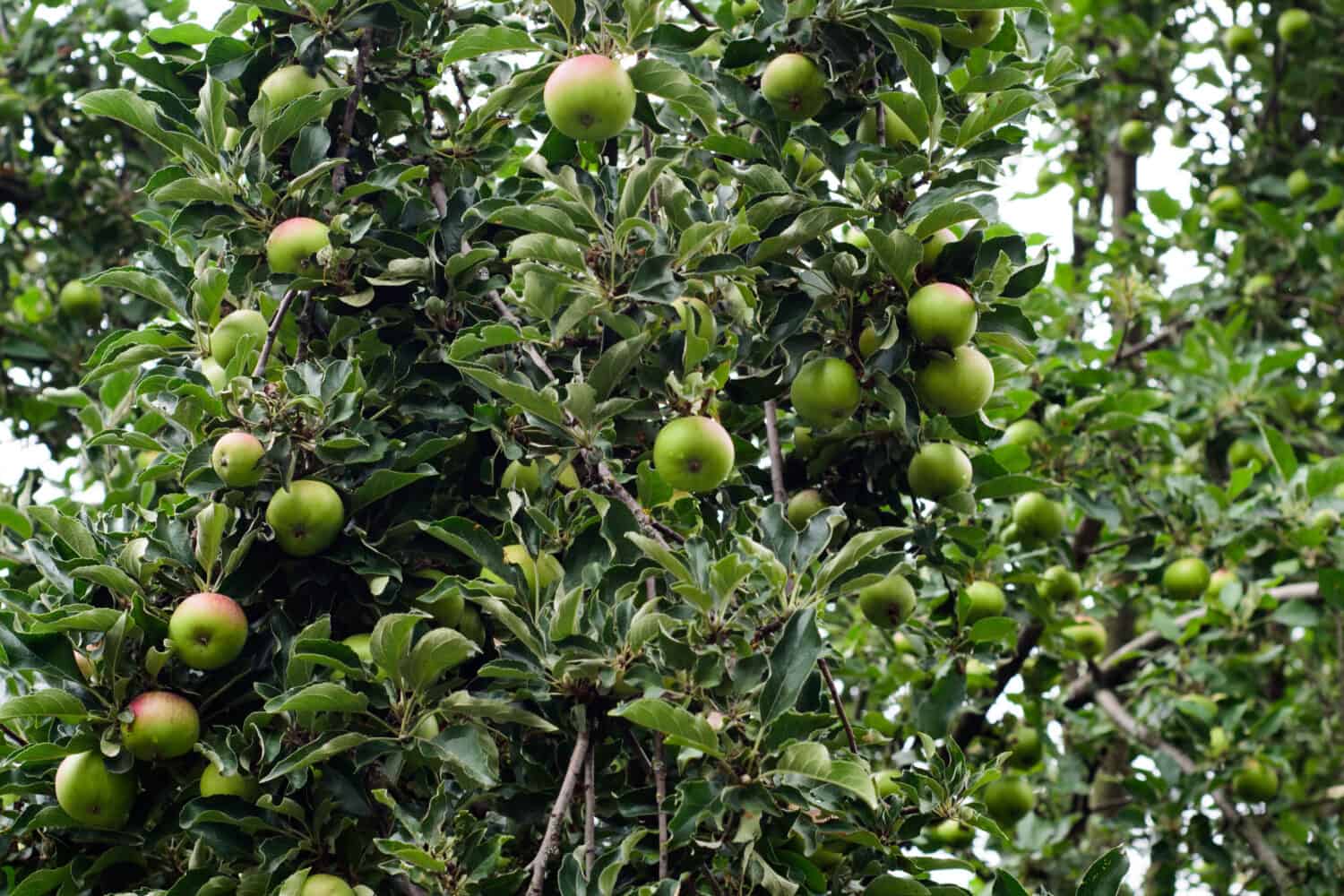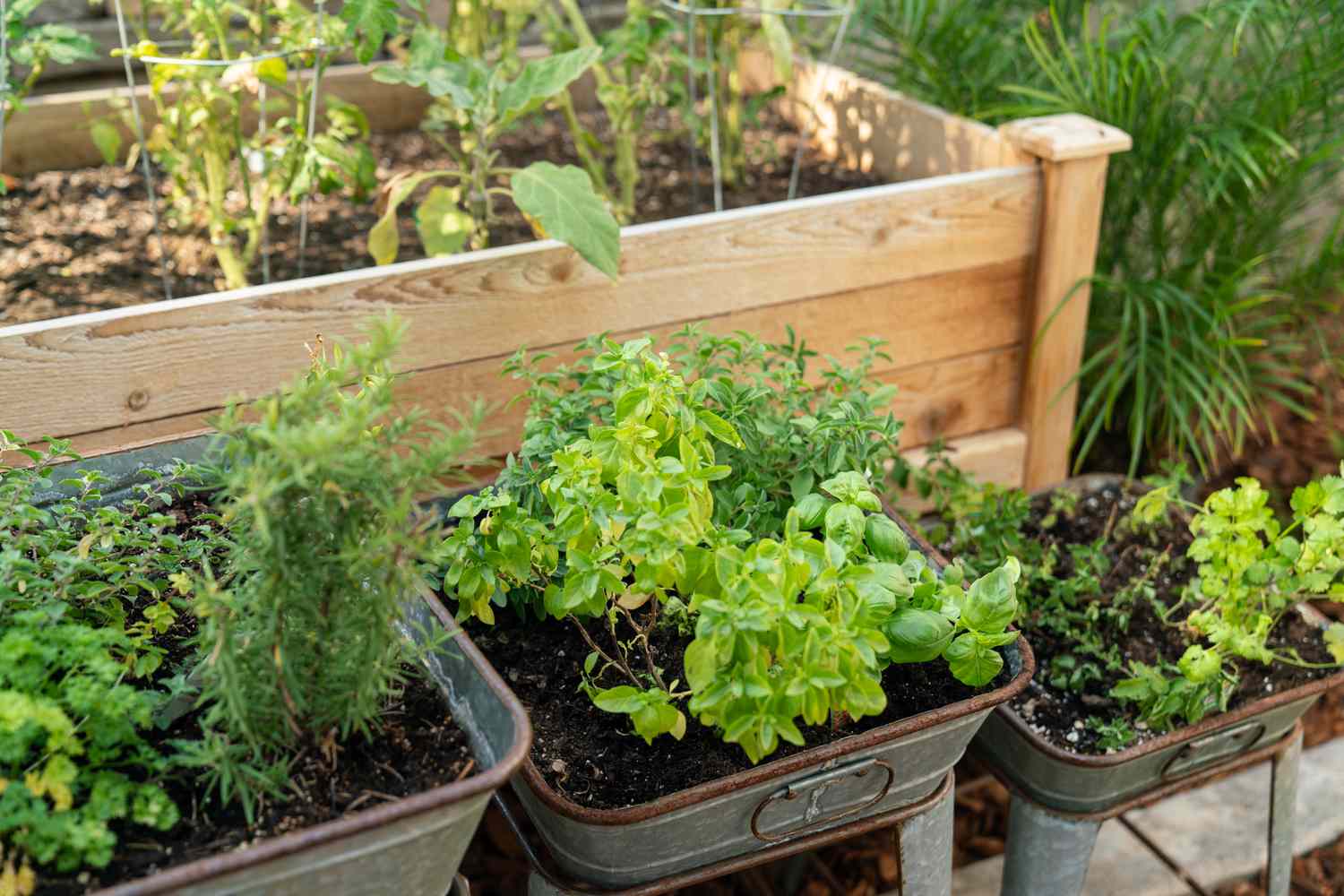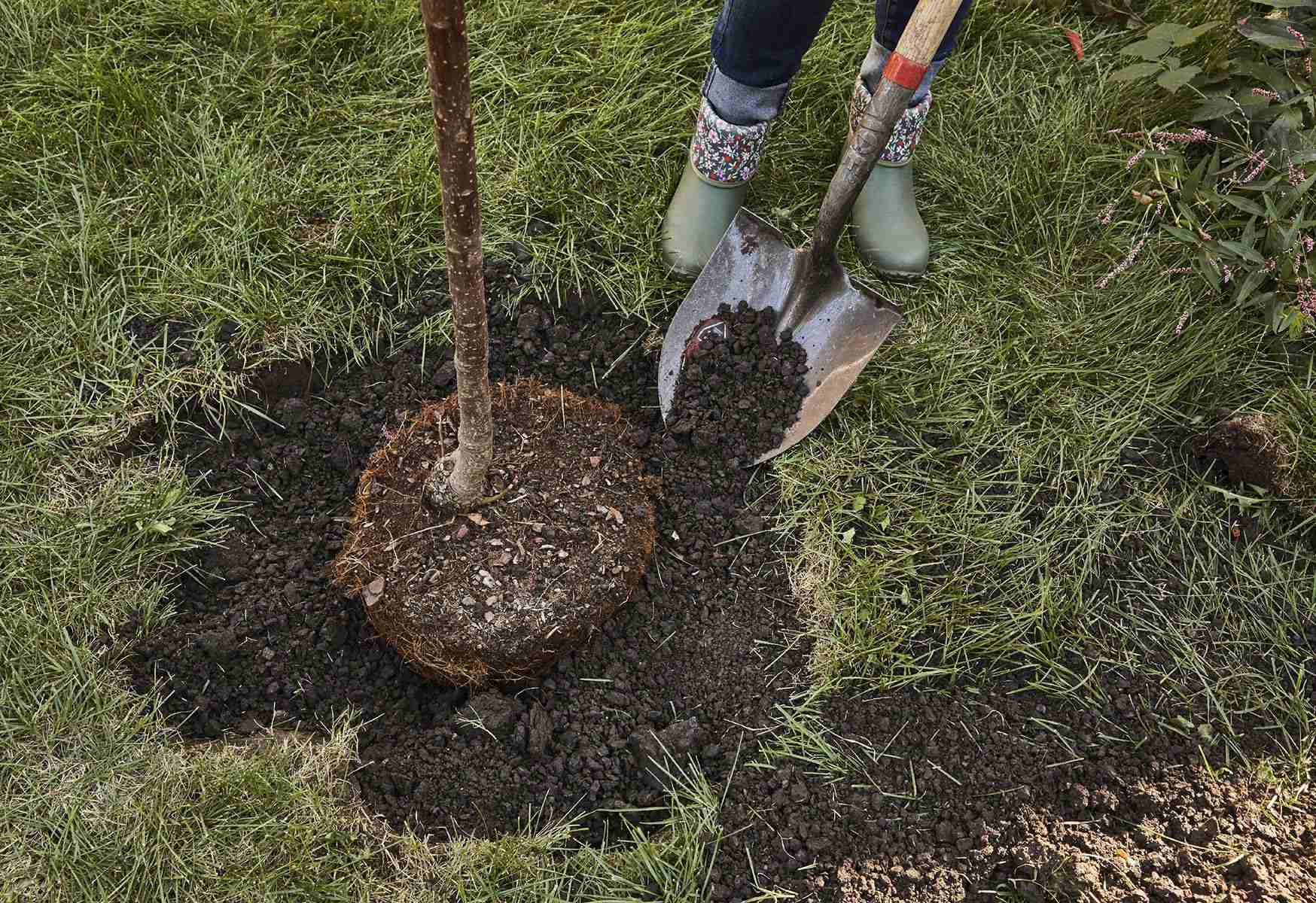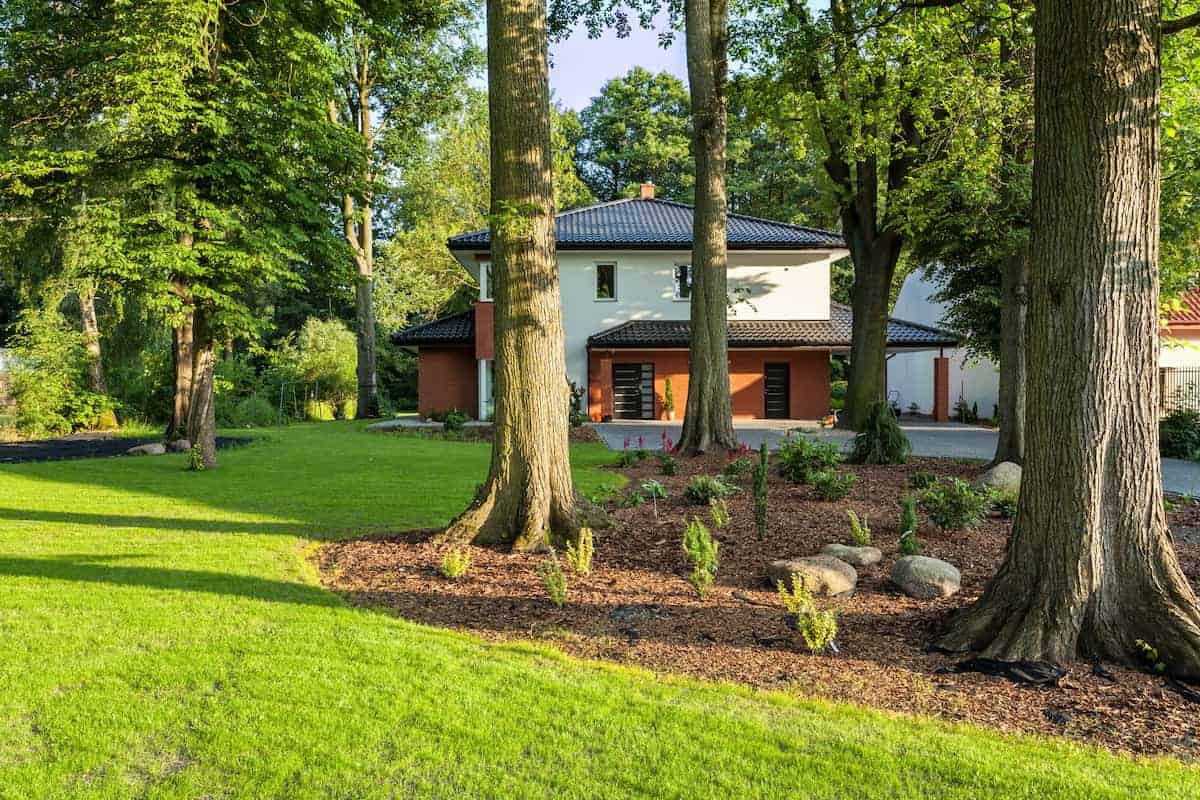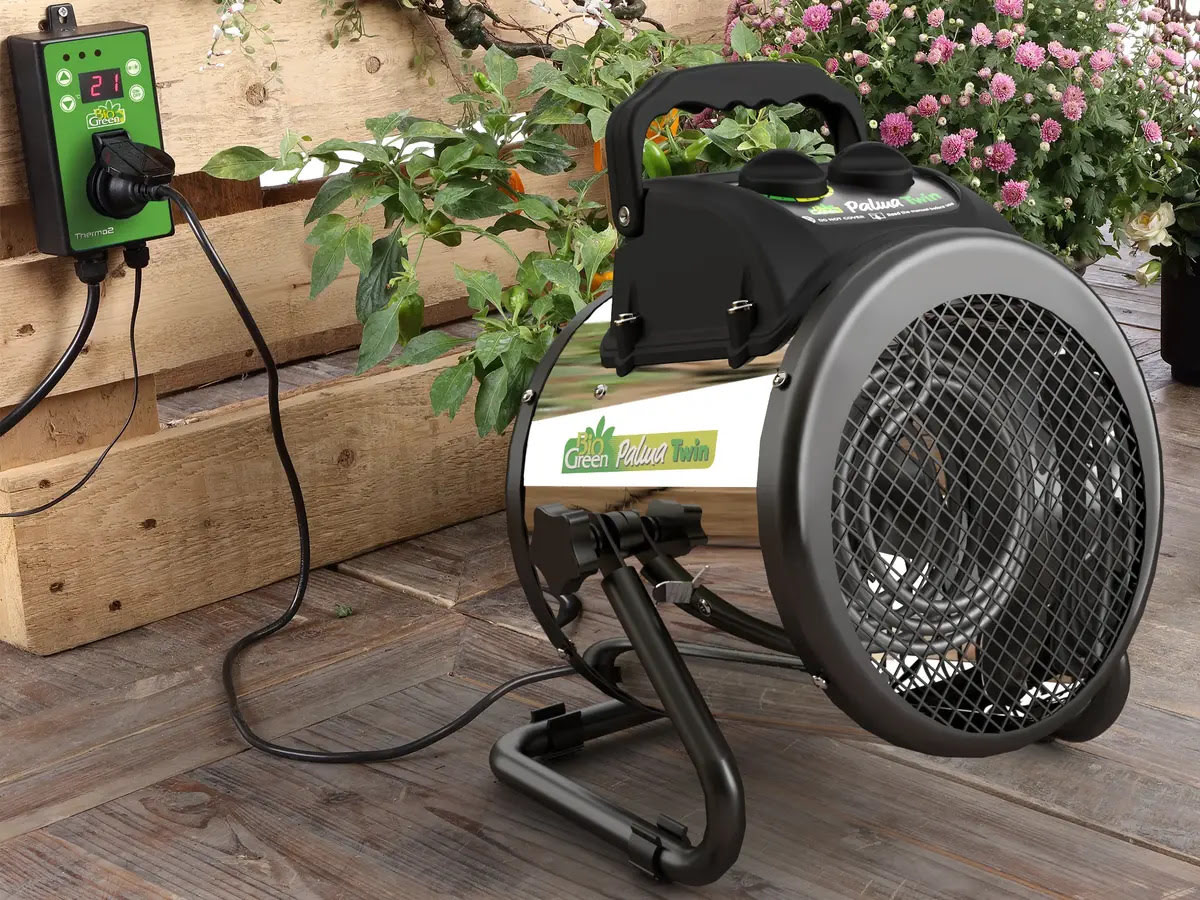Home>Types of Gardening>Ornamental Gardening>Tree Spacing When Planting
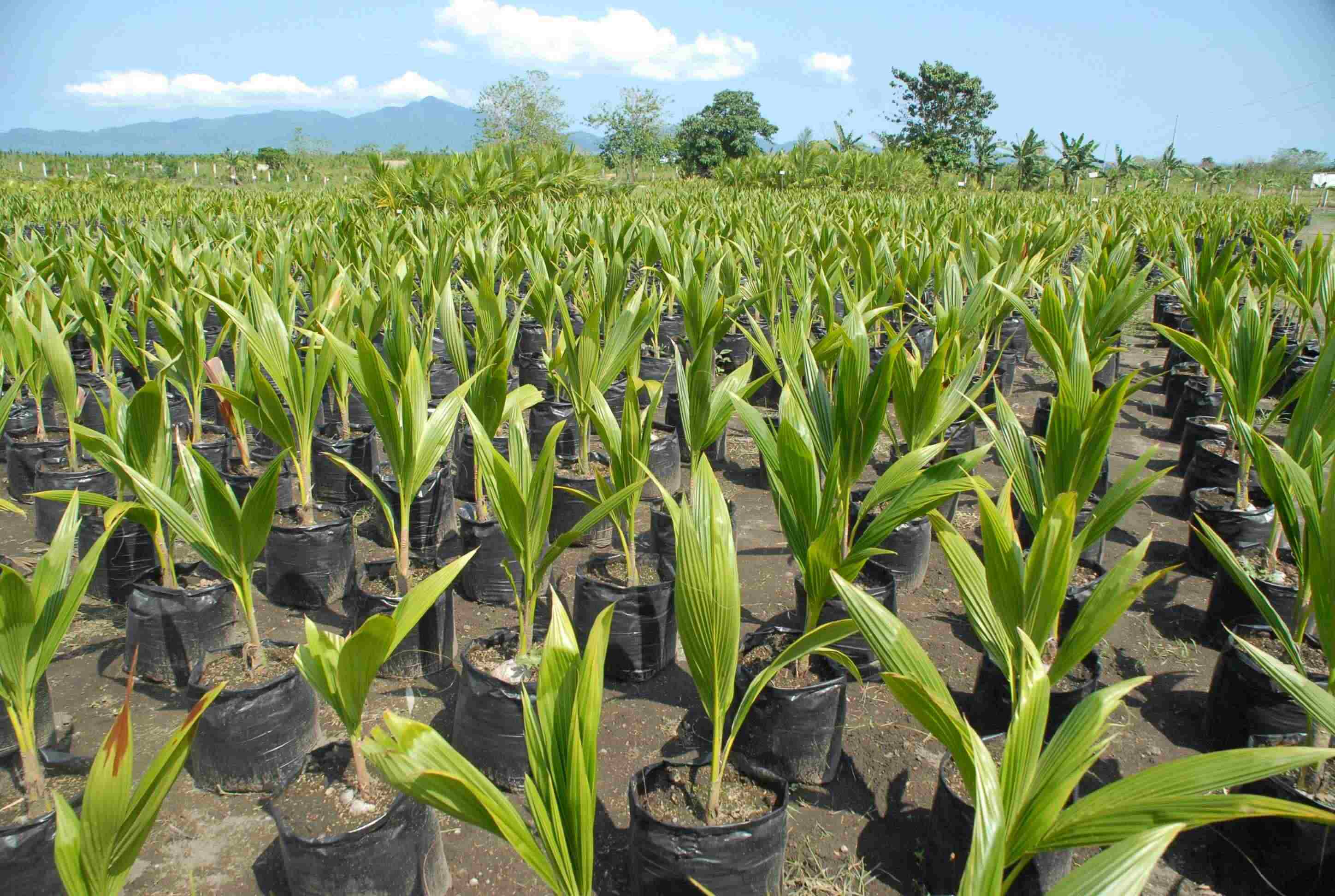

Ornamental Gardening
Tree Spacing When Planting
Modified: February 9, 2024
Proper spacing of trees is crucial in ornamental gardening to ensure healthy growth and aesthetically pleasing landscapes. Learn the essentials of tree spacing when planting for optimal results.
(Many of the links in this article redirect to a specific reviewed product. Your purchase of these products through affiliate links helps to generate commission for Chicagolandgardening.com, at no extra cost. Learn more)
Table of Contents
Introduction
Creating a beautiful and thriving ornamental garden is one of the most rewarding pursuits for gardening enthusiasts. The strategic placement and spacing of trees play a crucial role in achieving a visually appealing and functional outdoor space. Proper tree spacing not only enhances the overall aesthetic appeal of the garden but also promotes healthy growth and prevents overcrowding.
When it comes to ornamental gardening, there are various factors to consider when determining the appropriate tree spacing. The type of trees, their growth habits, purpose, and the specific design goals of the garden all need to be taken into account.
In this article, we will explore the factors to consider when determining tree spacing, as well as provide recommended guidelines for different types of trees and various garden design goals. Whether you are planning to plant fruit trees, shade trees, windbreaks, or privacy screens, understanding how to space your trees properly will help you create a harmonious and visually appealing garden.
So, if you’re ready to discover the secrets of ideal tree spacing to create a stunning ornamental garden, let’s dive in!
Factors to Consider
When determining the appropriate spacing for trees in your ornamental garden, several important factors come into play. Understanding these factors will ensure that your trees have sufficient room to grow and flourish, while also considering the overall design and functionality of your garden.
Growth habits: Trees have different growth habits, including height, spread, and canopy shape. Consider the mature size of the trees you are planting and allow enough space between them to accommodate their growth. This will prevent overcrowding and competition for resources such as sunlight, water, and nutrients.
Purpose: Consider the purpose of your trees. Are they meant to provide shade, act as a windbreak, create privacy, or simply enhance the visual appeal of the garden? The intended purpose will help determine the ideal spacing between trees.
Soil type and fertility: Different types of soil have varying levels of fertility and water-holding capacity. Take into consideration the specific soil conditions in your garden when determining tree spacing. In nutrient-rich soils, trees may have a tendency to grow larger and require more space, while in less fertile soils, they may not reach their full potential size.
Sunlight exposure: Some trees require full sun exposure, while others prefer partial shade. Consider the sunlight exposure in your garden and ensure that each tree receives adequate sunlight to thrive. Proper spacing allows for enough sunlight penetration and prevents overshadowing.
Air circulation: Good air circulation is essential for the health of trees. Proper spacing between trees allows for adequate airflow, reducing the risk of diseases caused by trapped moisture and promoting better overall tree health.
Species compatibility: Some tree species have aggressive root systems that can negatively impact nearby plants. Consider the compatibility of tree species when spacing them in your garden. Avoid planting trees with invasive root systems too close to other plants.
By carefully considering these factors, you can determine the ideal spacing between trees in your ornamental garden. This will create a harmonious and balanced landscape while promoting healthy growth and longevity for your trees.
Recommended Tree Spacing Guidelines
When it comes to determining the ideal spacing between trees in your ornamental garden, there are general guidelines that can serve as a starting point. However, keep in mind that these guidelines may vary depending on the specific tree species, growth habits, and garden design goals.
Small trees: Small trees, such as ornamental flowering trees or dwarf fruit trees, typically require spacing of 10 to 15 feet apart. This allows enough room for their roots and branches to develop without overcrowding. It also ensures that each tree has ample access to sunlight and nutrients.
Medium-sized trees: Medium-sized trees, such as most shade trees, generally require spacing of 20 to 30 feet apart. This allows for their growth and spread, ensuring that they have enough space to reach their full potential size and provide ample shade.
Large trees: Large trees, including species like oak or maple, need more room to grow due to their substantial size. Spacing for large trees should be around 30 to 50 feet apart. This allows for their expansive canopy to develop without crowding nearby trees or structures.
Considered growth habits: Some tree species have unique growth habits, such as columnar or weeping forms. These trees may require different spacing guidelines to showcase their natural shape and form. Consult specific resources or professionals for guidance when planting trees with distinctive growth habits.
Garden design: In addition to the size and growth habits of the trees, consider your garden design objectives. Do you want a dense, lush landscape, or do you prefer more open spaces? Adjust the spacing between trees based on your desired garden aesthetic and functionality.
Overcrowding prevention: Remember that trees will grow and expand over time. It is crucial to give them adequate room to prevent overcrowding as they mature. Planting trees too closely together can lead to competition for resources, stunted growth, and increased susceptibility to diseases and pests.
It is essential to note that these spacing guidelines serve as a general reference. Always consider the specific requirements of the tree species you are planting and any additional recommendations from horticultural experts or garden professionals.
Tree Spacing for Fruit Trees
Fruit trees are a popular addition to ornamental gardens, providing not only beautiful blossoms but also a bountiful harvest. Proper tree spacing is crucial for the health and productivity of fruit trees, ensuring optimal sunlight exposure, airflow, and efficient pollination.
When spacing fruit trees, consider their mature size and growth habits, as well as the specific fruit varieties you are planting. Most fruit trees require spacing between 15 to 25 feet apart, allowing enough room for the canopy to grow without overcrowding nearby trees or structures.
The exact spacing between fruit trees may differ depending on the specific fruit variety and rootstock used. Dwarf or semi-dwarf varieties, which naturally have a smaller mature size, can be planted closer together, typically around 10 to 15 feet apart. Standard-sized fruit trees, on the other hand, require more spacing to accommodate their larger canopies and root systems.
It is also important to consider the specific pollination requirements of fruit trees. Many fruit trees require cross-pollination for optimal fruit set. Planting compatible varieties within close proximity, ideally within 50 feet of each other, ensures effective pollination and a higher yield of fruits.
When spacing fruit trees, take into account the direction of prevailing winds. Planting trees in a staggered pattern can help create windbreaks and protect delicate blossoms and fruits from wind damage, especially for trees susceptible to windburn.
Proper spacing allows for sufficient air circulation, reducing the risk of fungal diseases that can impact fruit trees. Additionally, adequate sunlight exposure ensures that the fruit tree receives the necessary energy for photosynthesis and fruit development.
Lastly, consider the access you’ll need for harvesting, maintenance, and pest management. Leave enough space between fruit trees to safely maneuver around them and access the trees for pruning, thinning, and pest control.
Remember that the specific spacing requirements for fruit trees may vary depending on the type of fruit, regional climate, and local growing conditions. Consult reliable horticultural resources or seek advice from professionals in your area for more precise spacing recommendations for your fruit tree orchard.
Tree Spacing for Shade Trees
Shade trees are an excellent addition to any ornamental garden, providing relief from the sun’s rays and creating a cool and inviting outdoor space. Proper tree spacing is essential when planting shade trees, as it ensures the trees have enough room to grow to their full potential and provide ample shade.
When spacing shade trees, consider their mature size and growth habits. Most shade trees require spacing of 20 to 30 feet apart, allowing ample room for their canopies to expand and provide shade effectively. The exact spacing may vary depending on the specific shade tree species and their growth rate.
It is important to consider the desired shade coverage when determining the spacing between shade trees. If you prefer a denser shade with overlapping canopies, you may opt for closer spacing. However, if you prefer a more dappled shade effect, you can increase the spacing between shade trees.
When planting shade trees, take into account their eventual height and spread. Avoid planting shade trees too close to buildings, power lines, or other structures to prevent any future issues. Consider the tree’s root system as well, ensuring that it has enough space to develop without causing damage to underground utilities or nearby structures.
Spacing shade trees strategically can also help in creating a more comfortable microclimate. Planting shade trees on the western and southern sides of your property can help block the intense afternoon sun and reduce cooling costs during hot summer months.
Proper placement of shade trees can also have environmental benefits. By strategically spacing and positioning shade trees, you can create windbreaks, reducing the impact of strong winds on your garden and home. This can be especially beneficial in areas prone to severe weather conditions.
Lastly, consider the overall design and layout of your garden. The spacing between shade trees should complement the overall aesthetic you are trying to achieve. Additionally, leave enough space for other plants, flowers, or hardscape elements to ensure a visually appealing and well-balanced garden.
Before planting shade trees, research the specific requirements of the tree species you have chosen to ensure optimal growth and long-term health. Consulting local gardening experts or arborists can provide valuable insights and specific recommendations for tree spacing suitable for your region.
Tree Spacing for Windbreaks
Planting trees as windbreaks is an effective way to mitigate wind damage and create a more sheltered outdoor environment. Proper tree spacing is crucial when establishing windbreaks to ensure their effectiveness in reducing wind speed and protecting vulnerable areas of your garden.
When spacing trees for windbreaks, consider the desired height and density of the windbreak. Generally, trees should be spaced closer together for a denser windbreak and further apart for a more open windbreak. The spacing between trees can range from 6 to 20 feet, depending on the specific tree species and their growth rate.
The ideal spacing for windbreak trees also depends on the prevailing wind direction and intensity in your area. Planting trees in a staggered or zigzag pattern can help disrupt the wind flow, increasing the effectiveness of the windbreak. Additionally, consider planting taller trees closer to the wind source to provide better wind deflection.
While spacing trees closer together can maximize windbreak efficiency, it is important to maintain enough space for each tree to grow and develop a strong root system. Adequate spacing also allows for proper airflow through the windbreak, preventing the risk of diseases caused by stagnant air and excessive moisture.
Consider the mature size and growth habits of the tree species you are planting for the windbreak. Trees with a dense and bushy foliage, such as evergreens, generally provide better wind protection. However, select tree species that are well-suited to your local climate and soil conditions to ensure their long-term health and resilience.
When planting windbreaks, it is also essential to consider the impact on neighboring areas. Avoid planting trees too close to buildings, structures, or neighboring properties to prevent potential issues with shade, root invasion, or obstruction of views.
Regular maintenance and pruning of windbreak trees will help maintain their effectiveness over time. Pruning can help shape the windbreak and remove any damaged or diseased branches that may compromise its functionality. It is important to follow proper pruning techniques to minimize stress and promote healthy growth.
Consulting with local gardening experts or arborists is highly recommended when planning windbreaks. They can provide valuable advice regarding the most suitable tree species, spacing requirements, and maintenance practices specific to your region.
Tree Spacing for Privacy Screens
Creating privacy in your outdoor space is essential for enjoying quiet and secluded moments. Planting trees as privacy screens can effectively block unwanted views and create a secluded ambiance. Proper tree spacing is crucial to ensure that the privacy screen provides adequate coverage and fulfills its intended purpose.
When spacing trees for privacy screens, consider the desired height and density of the screen. The spacing will depend on the specific tree species and their growth rate. For a faster-growing privacy screen, you may need to space trees closer together, while slower-growing trees can be planted with wider spacing.
Generally, spacing trees around 8 to 10 feet apart is suitable for creating a dense privacy screen. This spacing allows for the trees to grow and their branches to intertwine, creating a seamless and effective barrier. However, it is essential to consider the desired height and spread of the trees at maturity when determining the spacing.
Consider the specific tree species you are using for the privacy screen. Some tree varieties naturally have a dense and bushy foliage, providing better coverage and privacy. Choosing evergreen trees can ensure year-round privacy by retaining their foliage all year.
When planting a privacy screen, consider the orientation and the line of sight you are trying to block. Correctly positioning the trees can maximize privacy and prevent any potential gaps in the screen. Planting trees on a staggered pattern or in multiple rows can also enhance the effectiveness of the privacy screen.
Remember to take into account the mature size of the trees and their proximity to structures or property boundaries. Avoid planting trees too close to buildings or property lines to prevent any potential issues with overshadowing, root invasion, or encroachment on neighboring properties.
Regular pruning and maintenance are crucial for the health and longevity of privacy screen trees. Pruning can help maintain the desired height and density of the screen, as well as remove any dead or diseased branches. However, be mindful not to excessively prune the trees, as this may compromise their overall health and privacy coverage.
Consulting with local gardening experts or arborists is recommended when planning privacy screens. They can provide valuable insights regarding suitable tree species, spacing requirements, and maintenance practices specific to your region.
Tree Spacing for Aesthetics
When it comes to designing an ornamental garden, tree spacing plays a crucial role in creating a visually appealing and harmonious landscape. Properly spaced trees can enhance the overall aesthetics of your garden, creating a balanced and captivating outdoor space.
When spacing trees for aesthetic purposes, consider the desired visual effect you want to achieve. It is important to balance the spacing between trees to create a sense of rhythm and flow in the garden. Spacing trees too closely together can result in a crowded and cluttered appearance, while planting them too far apart can make the landscape feel sparse and empty.
Varying the spacing between trees can add depth and dimension to your garden. Consider grouping trees of the same species together with slightly wider spacing between groups to create natural focal points or break up the visual monotony.
When selecting tree species for aesthetic planting, consider their growth habits, foliage colors, and textures. Different tree varieties offer various visual attributes that can complement or contrast with each other to create a visually stunning display. Experiment with mixing different tree species to create an interesting and diverse landscape.
Spacing trees at different heights can also add interest and create a layered effect in your garden. Planting taller trees towards the back and shorter trees towards the front can help create depth and perspective. This arrangement allows for better visibility of all the trees in the landscape and highlights their unique features.
Consider the overall theme or style of your garden when spacing trees. For a formal garden, trees with a symmetrical growth habit may be spaced more uniformly, creating a sense of order and precision. In a more natural or cottage-style garden, trees may be spaced more organically and irregularly, mimicking the randomness of nature.
Proper tree spacing also allows for the inclusion of other garden elements, such as flowers, shrubs, or hardscape features. Leaving enough space between trees provides room to incorporate these elements, ensuring a well-balanced and cohesive design.
Regular maintenance is essential to preserve the aesthetic appeal of the tree spacing. Pruning can help maintain the desired shape and proportions of the trees, as well as remove any dead or overgrown branches that may detract from the overall visual effect.
By carefully considering the spacing between trees and the overall design objectives, you can create a visually stunning and aesthetically pleasing garden that showcases the beauty of nature and brings joy to all who admire it.
Conclusion
Proper tree spacing is a critical consideration when planning an ornamental garden. The strategic placement of trees not only enhances the visual appeal of the landscape but also ensures the health and longevity of the trees themselves. By considering factors such as growth habits, purpose, soil conditions, sunlight exposure, and design goals, you can determine the ideal spacing for different types of trees in your garden.
For fruit trees, providing the appropriate spacing ensures healthy growth and optimal fruit production, while considering pollination requirements. Shade trees need enough room to reach their full potential size and provide ample shade, while windbreaks should be spaced to effectively reduce wind speed and protect your garden. Privacy screens require careful spacing to create a dense and effective barrier, and aesthetic spacing contributes to the overall beauty and cohesion of your garden design.
While guidelines and recommendations for tree spacing are valuable starting points, it’s important to remember that specific tree species, local climate, and personal preferences should also be taken into account. Consulting with gardening experts, arborists, or local resources can provide valuable insights and recommendations tailored to your unique garden and environmental conditions.
Proper tree spacing not only enhances the visual appeal and functionality of your garden but also ensures the long-term health and vitality of your trees. By striking the right balance between spacing trees for growth and creating an aesthetically pleasing landscape, you will be able to enjoy a beautiful and thriving ornamental garden that brings joy and tranquility for years to come.
